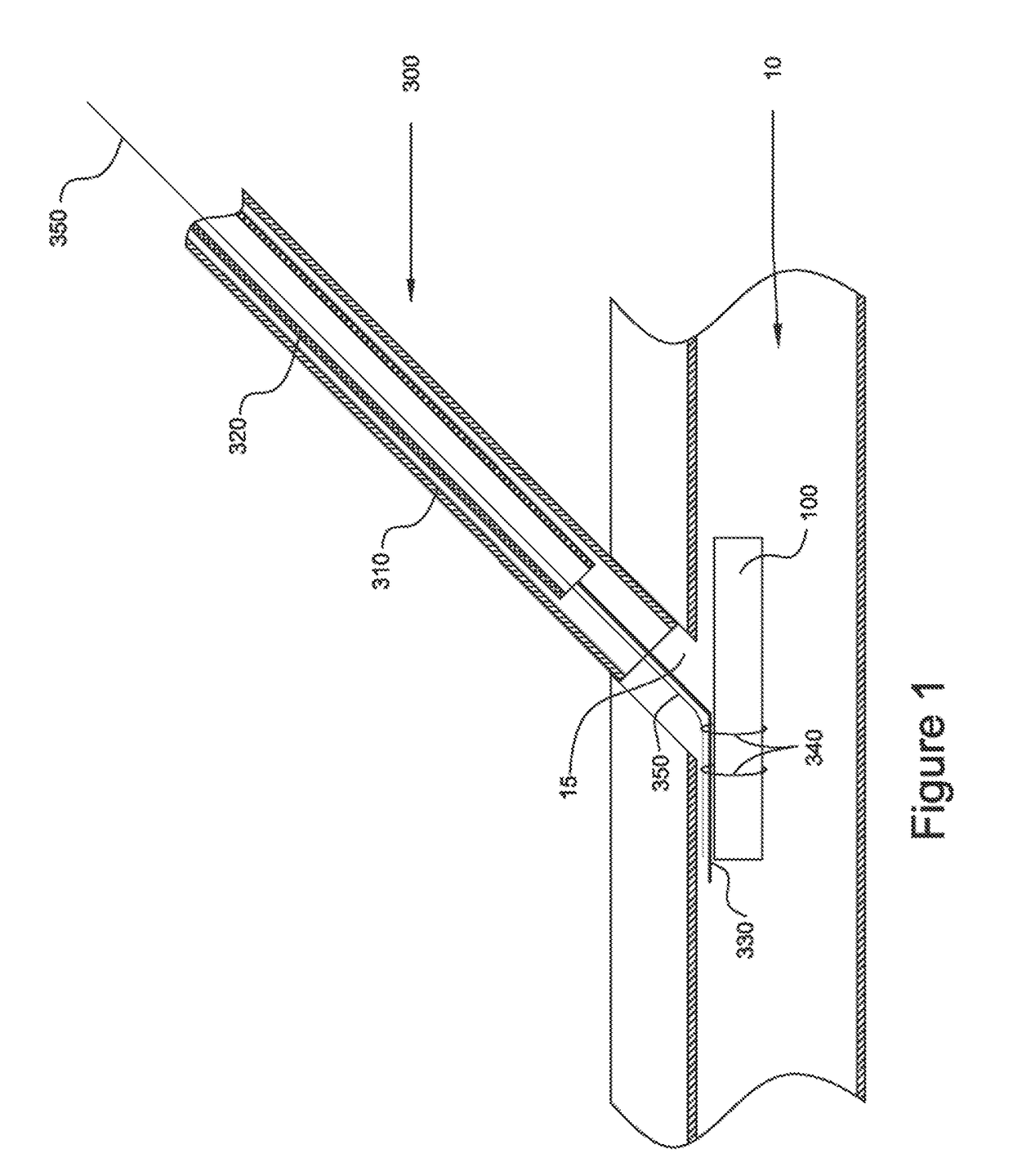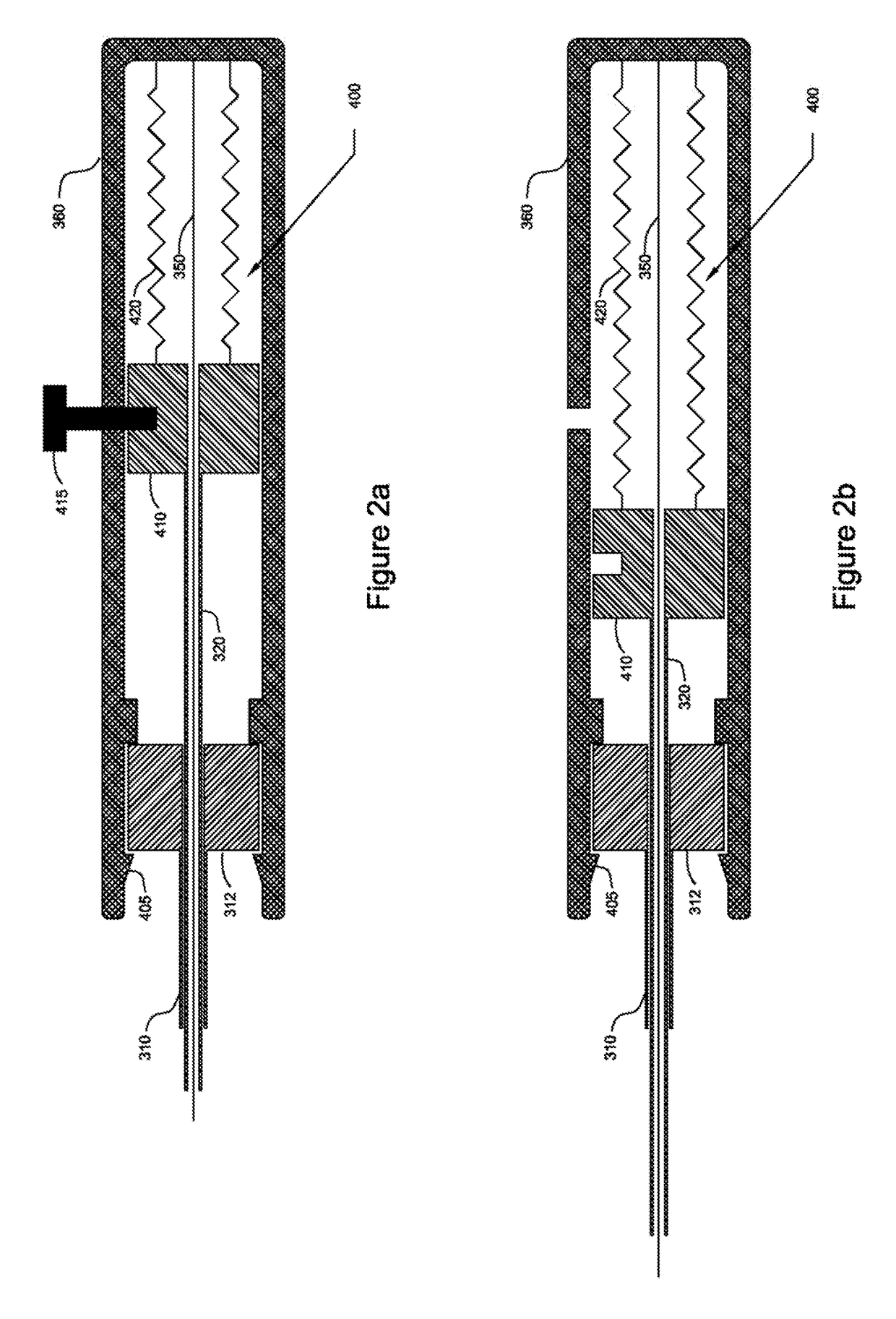Vasculature closure devices and automatic deployment systems
a technology of valve closure and automatic deployment, which is applied in the field of implantable medical devices and treatment methods, can solve the problems of increasing the potential for clots at the puncture site to become dislodged, affecting the effect of patient safety, and affecting the safety of patients,
- Summary
- Abstract
- Description
- Claims
- Application Information
AI Technical Summary
Benefits of technology
Problems solved by technology
Method used
Image
Examples
Embodiment Construction
[0022]Vasculature closure devices (VCDs) and systems and methods for their use are provided to address some or all of the above-described needs. In particular, VCDs, VCD delivery systems, and VCD delivery methods that quickly and effectively close openings in vessel walls have been developed. Such VCDs, systems, and methods advantageously may avoid, or at least substantially reduce, the time and expense of applying manual pressure to an opening, simplify the steps required to close the opening, avoid widening of the opening, and more effectively retain the VCD in the vessel.
[0023]The VCDs, systems, and methods provided herein generally may be configured in a manner similar to the VCDs, systems, and methods provided in International Patent Application Publication No. WO 2011 / 046932 to Penner et al. and International Patent Application Publication No. WO 2013 / 188351 to Penner et al. (which are referred to herein as “the prior publications”), as will be appreciated upon review of the f...
PUM
 Login to View More
Login to View More Abstract
Description
Claims
Application Information
 Login to View More
Login to View More - R&D
- Intellectual Property
- Life Sciences
- Materials
- Tech Scout
- Unparalleled Data Quality
- Higher Quality Content
- 60% Fewer Hallucinations
Browse by: Latest US Patents, China's latest patents, Technical Efficacy Thesaurus, Application Domain, Technology Topic, Popular Technical Reports.
© 2025 PatSnap. All rights reserved.Legal|Privacy policy|Modern Slavery Act Transparency Statement|Sitemap|About US| Contact US: help@patsnap.com



